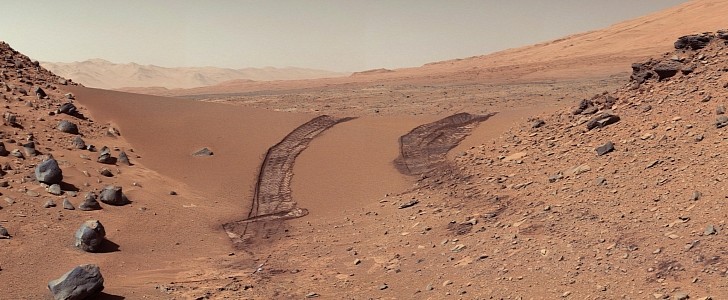While NASA’s Perseverence and its helicopter buddy have been in the spotlight these weeks, the Curiosity rover was still doing its assigned job of drilling into Martian rocks, searching for signs of past life. After eight years of spending its time on the rusty planet, the car-sized rover has now discovered ancient organic salts that have been frozen for billions of years in rocks.
The data sent by the rover’s Sample Analysis at Mars or SAM – a tool inside Curiosity’s belly that identifies a wide range of organic compounds –points to the presence of organic salts. According to a NASA research team led by organic geochemist James Lewis, these salts could have formed as a result of geologic processes or be the remains of ancient microbial life.
So why is this a big thing? Well, the finding could add to the idea that Mars can be habitable and support life since the same compounds are also found here back on Earth under the form of organic acids found in plants or acetates used in foods or textiles.
While SAM did indirectly detect the salts, direct analysis of them on Mars could pose a challenge for the researchers. Since the instrument works by heating sample rocks to 1,800 degrees Fahrenheit (1,000 degrees Celsius), the gases released in the process that reveal their composition could also be formed by other ingredients found in the Martian soil.
As a result, researchers suggest that another tool onboard Curiositycould study the rocks to directly detect the salts. The Chemistry and Mineralogy instrument, or CheMin, could identify different minerals, but they have to be present in sufficient amounts. That’s also quite challenging for NASA since billions of years of radiation have erased or broken apart organic matter. CheMin has not detected organic salts yet, but Curiosity will continue to search for them while moving to a new Martian region in the Gale Crater.
As the agency informs, Curiosity will be joined next year by European Space Agency’s ExoMars rover. The machine will be able to drill down to 6.5 feet (2 meters) to reach deeper soil layers. This will facilitate the mission and aid scientists in supporting the idea that organic matter was indeed present on Mars. NASA’s team research paper can be read in the Journal of Geophysical Research: Planets.
So why is this a big thing? Well, the finding could add to the idea that Mars can be habitable and support life since the same compounds are also found here back on Earth under the form of organic acids found in plants or acetates used in foods or textiles.
While SAM did indirectly detect the salts, direct analysis of them on Mars could pose a challenge for the researchers. Since the instrument works by heating sample rocks to 1,800 degrees Fahrenheit (1,000 degrees Celsius), the gases released in the process that reveal their composition could also be formed by other ingredients found in the Martian soil.
As a result, researchers suggest that another tool onboard Curiositycould study the rocks to directly detect the salts. The Chemistry and Mineralogy instrument, or CheMin, could identify different minerals, but they have to be present in sufficient amounts. That’s also quite challenging for NASA since billions of years of radiation have erased or broken apart organic matter. CheMin has not detected organic salts yet, but Curiosity will continue to search for them while moving to a new Martian region in the Gale Crater.
As the agency informs, Curiosity will be joined next year by European Space Agency’s ExoMars rover. The machine will be able to drill down to 6.5 feet (2 meters) to reach deeper soil layers. This will facilitate the mission and aid scientists in supporting the idea that organic matter was indeed present on Mars. NASA’s team research paper can be read in the Journal of Geophysical Research: Planets.

